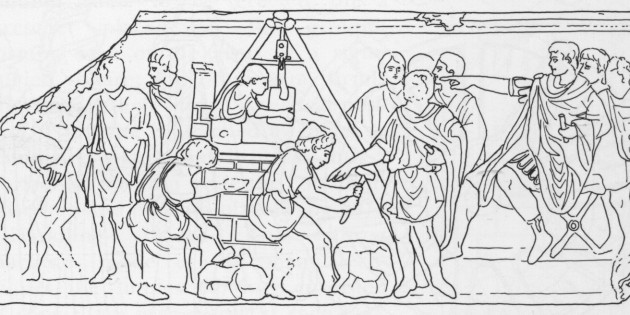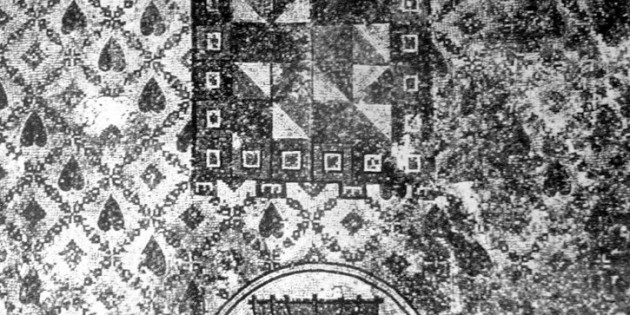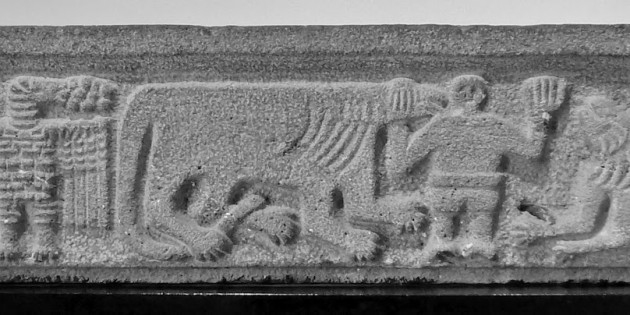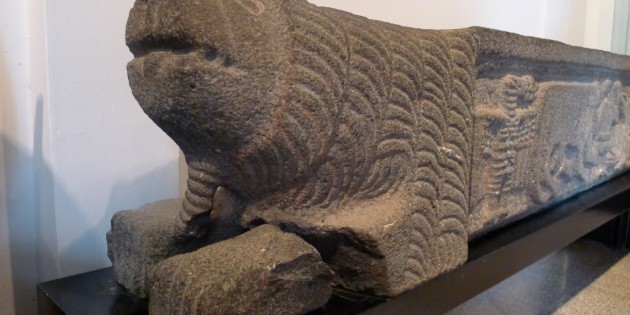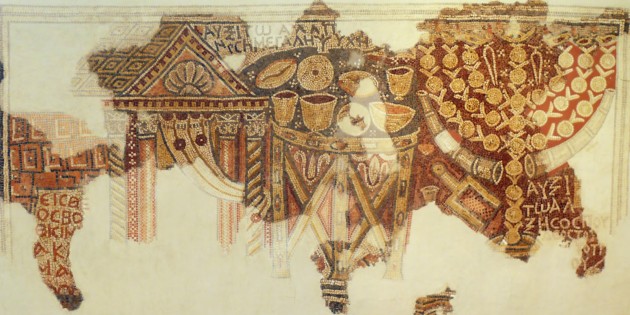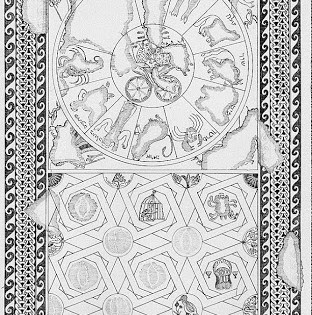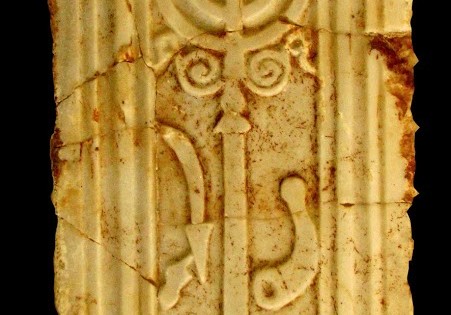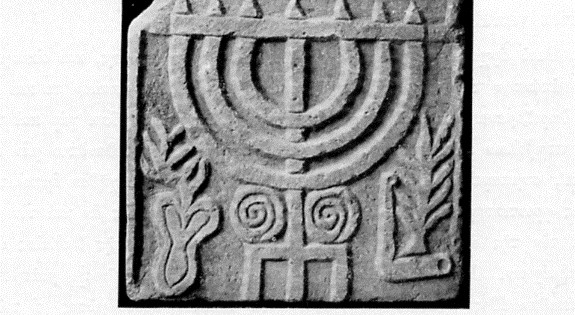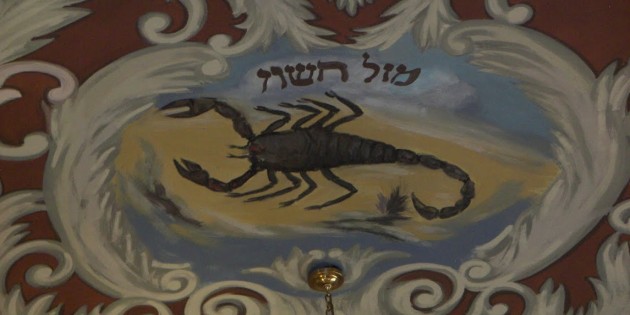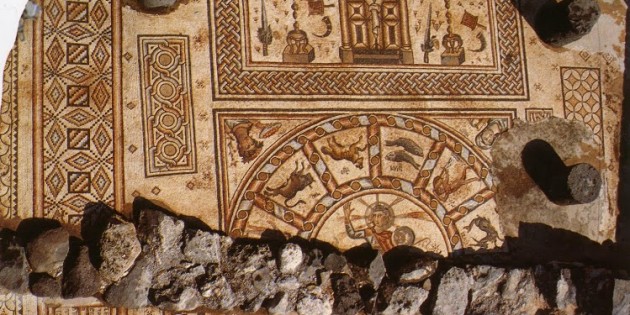Home » Greco-Roman Period » First Revolt to Bar Kokhba
First Revolt to Bar Kokhba
“See, I Have Called the Renowned Name of Bezalel, Son of Uri . . .”: Josephus’s Portrayal of the Biblical “Architect”. Above we see a picture of people building the Tabernacle under the guidance of Bezalel. Bezalel son of Uri, literally “in the shadow of God, son of light,” is a unique character in the Hebrew Bible. He […]
The earliest mosaic yet found in Israel, dating to the late Hasmonean period (1st century B.C.). The mosaic comes from the bath near the most elegant of the six mikvaot found at the Hasmonean Palace, which was probably used by members of the royal family.
Torah shrine base, En Samsam, Golan Heights. Biblical imagery is common on the floors of a number of synagogues, including the binding of Isaac, Aaron in the Tabernacle, Noah, Samson, and Daniel in an orans position within the lion’s den—an image that also appears on this base of a Torah shrine from the Golan Heights.
Torah shrine base, En Samsam, Golan Heights. Biblical imagery is common on the floors of a number of synagogues, including the binding of Isaac, Aaron in the Tabernacle, Noah, Samson, and Daniel in an orans position within the lion’s den—an image that also appears on this base of a Torah shrine from the Golan Heights.
Before the Torah shrine was a second mosaic panel, this one containing the image of a Torah ark, evoking the biblical ark of the covenant, flanked by seven-branched menorahs from which lamps were suspended for additional light—apparently a mirror image of the synagogue furnishings before which it was laid. Stone arks and large menorahs have […]
Drawings of the Na’aran (Ein Duq) Synagogue (after Louis-Hugues Vincent, “Un sanctuaire dans la région de Jericho, la synagogue de Na’arah,”. In his famous compendium of biblical sites in the Holy Land, the great fourth-century church father Eusebius of Caesarea includes an entry for “Naarah ([mentioned in] Joshua 16:7). In the [region of the biblical] tribe […]
Menorah panel discovered in the synagogue of Andriake. The iconography of the menorah—spirals beneath each branch, palm frond and citron to its left, and a shofar to its right—is clearly Jewish and fits with the other menorahs with curls from Nicaea, Sardis, and now Andriake in Lycia. Stephan Westphalen, writes, “[t]he menorah plaque was reused as a […]
Menorah plaque from the Priene Basilica. The German caption below translates: “Seven-armed candelabrum from the large church.” This marble menorah plaque was discovered at Priene in the Grossenkirchen and published in 1892. It was found in the church.
Bialystoker Synagogue, Manhattan, details of the wall and ceiling paintings. In Eastern Europe, this tradition of painted synagogues, often with signs of the zodiac, was quite common before the Holocaust, and it is maintained in a few remaining synagogue buildings—most prominently the Bialystoker Synagogue in lower Manhattan. This kind of decoration, as uncommon as it is […]
The above tiles are from a Synagogue in Hamat Tiberias. The Hammat Tiberias Synagogue is an ancient Synagogue on the outskirts of Tiberias, located near the hot springs just south of the city. The synagogue dates to 286 and 337 CE, when Tiberias was the seat of the Sanhedrin. Two synagogue sites have been excavated at […]

